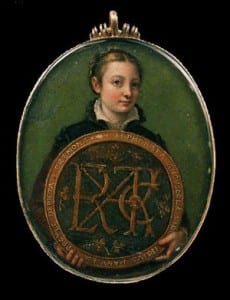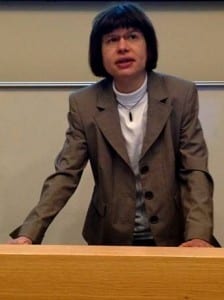Lunch Hour Lecture: Still Lives — Death, Desire and the portrait of the Old Master
By Ella Richards, on 4 March 2016
Dr Maria Loh (UCL History of Art) opened her Lunch Hour Lecture on Renaissance self-portraits with a very contemporary comment on self-presentation.
“Hair matters”
Speaking as Hillary Clinton campaigns to be the next President of the United States, Dr Loh quoted Clinton’s Yale University commencement speech from 2001: ”hair matters…Your hair will send significant messages to those around you. What hopes and dreams you have for the world… Pay attention to your hair, because everyone else will.”
Dr Loh argued that Clinton’s words resonated more widely than we might realise. Showing the theatre the evolution of David Beckham’s hair and reminding us of the message that Britney Spears sent out when she shaved all of her hair off, Loh noted that the hairstyle of a Roman bust is often a key indicator of the period of the sculpture.
Renaissance self-portraits

Sofonisba Anguissola, 1556
via Wikimedia Commons
With this in mind, Loh presented her first old master: Sofonisba Anguissola.
Sofonisba Anguissola was one of the great portrait artists of the Renaissance period and Dr Loh argued that in an early self-portrait Anguissola sought to make her ambitions clear.
She stands with neatly parted hair holding a shield that declares “The maiden Sofonisba Anguissola, depicted in her own hand, from a mirror, at Cremona”, an explicit act of self-presentation that directs the onlooker’s interpretation of her image.
Anguissola’s desire to control her own image was a lifelong trait. When Anthony Van Dyck painted Anguissola in her 90s, she told him to not position the light in the portrait too high lest the “shadows in the wrinkles of old age should become too strong.” (more…)
 Close
Close


